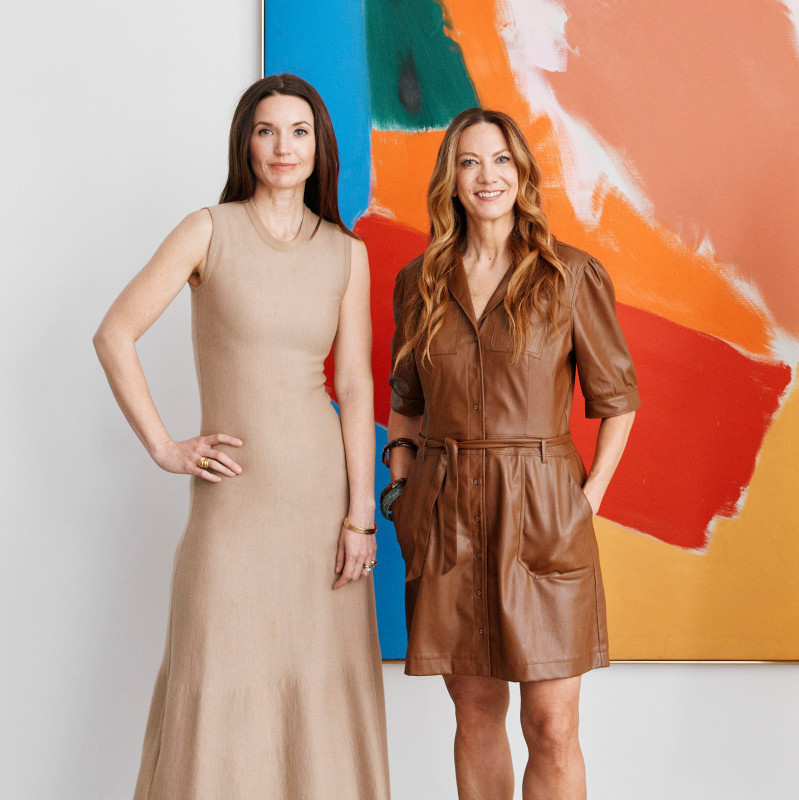In our recent conversation with Allison Thorpe, Senior VP at Sutton Communications, we explored the crucial role storytelling plays in building a gallery’s brand and attracting collectors. Allison shared invaluable insights, drawing from real examples from galleries like Berry Campbell Gallery and Richard Saltoun Gallery—both clients of Artlogic and Sutton Communications. These examples highlight how strategic branding and storytelling can help galleries stand out in a competitive market. Discover these insights and watch the full webinar on-demand.
Authenticity: The Foundation of a Strong Brand
“Authenticity is so important and crucial in successful storytelling.”
In the art world, authenticity is everything. Collectors, curators, and critics respond to galleries that have a clear, unique perspective and a well-defined vision. A compelling example of this is Berry Campbell Gallery, founded by Christine Berry and Martha Campbell.
The two gallerists came together over a shared passion for post-war American abstraction—specifically female Abstract Expressionist painters. While many galleries focused on established names like Jackson Pollock and Willem de Kooning, Berry and Campbell took a different approach. They spent countless hours in the archives of America in Washington, D.C., uncovering overlooked artists from this period—figures who were often connected to major art movements but had not received the same recognition.
This dedication to rediscovering forgotten artists became the core of their brand identity. Their deep research, curatorial expertise, and smart acquisitions set them apart, and their brand story was carefully shaped to highlight these values. Through strategic press and marketing efforts by Sutton Communications, Berry Campbell Gallery secured features in major publications like Vogue, reinforcing their reputation as a gallery that champions historically significant yet underrecognized artists. Their authenticity wasn’t just a marketing angle—it was the essence of their mission, and that’s what resonated with collectors.
Responding to the Cultural Zeitgeist
“But once a story has been told, it’s old news.”
In an ever-evolving cultural landscape, galleries must go beyond a single narrative and continuously respond to what’s happening around them. The best branding isn’t static—it evolves, tapping into broader cultural conversations and current events.
Recent wildfires in Los Angeles and a new U.S. administration have shown galleries need to, at times, quickly respond. Many of the exhibitions around Frieze LA 2025 focused on local communities, natural disasters, and climate change, reflecting the urgent issues shaping our world. But it’s difficult to communicate a story while history is unfolding in real time.
A great example of responding to the moment is the 100% Women campaign at Richard Saltoun Gallery. In 2019, during the height of the Me Too movement, the London-based gallery—known for its representation of conceptual photography from the 1960s and ’70s—was in the midst of relocating to a new space in Mayfair.
When analyzing sales data, it became clear that the gallery was primarily selling works by female photographers to female collectors. Recognizing the cultural moment, the team made a bold decision: for an entire year, they committed to showcasing only female artists across all exhibitions and art fairs. This initiative wasn’t just timely—it was a powerful statement. The campaign gained significant media attention, with features in The Financial Times, Apollo, and Stylist. It also led to partnerships with figures like Victoria Beckham and put the gallery on the map in a way that a traditional marketing campaign never could. The collaboration between Richard Saltoun Gallery and Sutton Communications was integral in the campaign’s success, proving how powerful a well-executed story can be in the art world.
Why Storytelling Drives Collector Engagement
“You attract collectors by building a brand, and you build a brand by telling stories.”
A well-crafted brand story builds trust and intrigue, making collectors more likely to engage, inquire, and invest. However, storytelling isn’t just about crafting a single compelling narrative—it’s about remaining relevant, adapting to the moment, and ensuring that a gallery’s vision aligns with cultural shifts.
While direct outreach and personal relationships are essential, branding ensures that when collectors encounter a gallery—whether through a high-profile article, an Instagram campaign, or an exhibition tackling a timely issue—they already feel a connection. By refining and consistently sharing a strong brand story, galleries can cultivate interest, drive demand, and create lasting relationships with collectors, ensuring their relevance in a fast-moving world.
Discover these insights and watch the full webinar on-demand.






